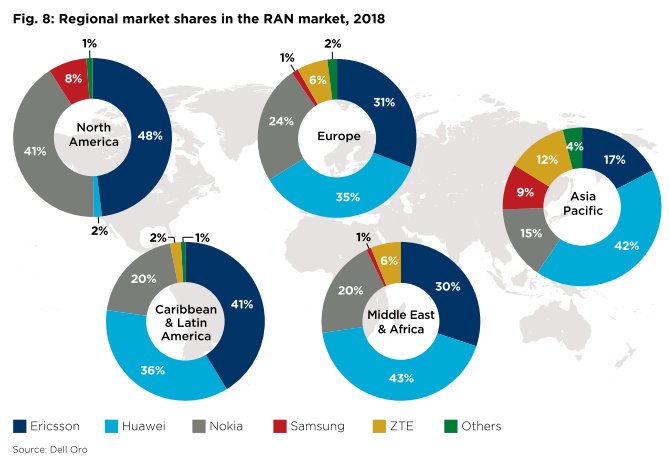OK, so we just finished our 3-paper series on the #EUChipsAct.
The 3. paper assesses the effectiveness of the proposed #Crisis Response Toolbox.
stiftung-nv.de/en/publication…
We see many, many problems. Here's why... 🧵
#semiconductors #chips #chipshortage #Europe
The 3. paper assesses the effectiveness of the proposed #Crisis Response Toolbox.
stiftung-nv.de/en/publication…
We see many, many problems. Here's why... 🧵
#semiconductors #chips #chipshortage #Europe

The proposal talks about utilizing common purchasing, export restrictions and priority-rated orders during future chip shortages to ensure security of supply for Europe.
We also added national reserves since several countries (Spain, Japan...) are thinking about those.
We also added national reserves since several countries (Spain, Japan...) are thinking about those.
Let's walk through the value chain, shall we?
Chips:
None of the tools are effective when applied to individual chips because semiconductors are...
- highly customized/not substitutable
- end-products (cars...) need ~1000 chips from all over the world
Chips:
None of the tools are effective when applied to individual chips because semiconductors are...
- highly customized/not substitutable
- end-products (cars...) need ~1000 chips from all over the world
Front-/Back-end fabs (priority-rated orders):
- it takes 4-6 months to make a chip
- other orders would need to be rescheduled, that takes also time
- Many shortages were due to lack of chemicals/substrates. What is an EU fab supposed to do when chemicals are missing?
- it takes 4-6 months to make a chip
- other orders would need to be rescheduled, that takes also time
- Many shortages were due to lack of chemicals/substrates. What is an EU fab supposed to do when chemicals are missing?
Equipment:
- good luck trying to use common purchasing for EUV steppers🙄 same goes for national reserves.
- Using export restrictions on EU equipment? Great, you still need all the missing equipment from US/JP!
Pissing off your allies in a transnational value chain - bad idea.
- good luck trying to use common purchasing for EUV steppers🙄 same goes for national reserves.
- Using export restrictions on EU equipment? Great, you still need all the missing equipment from US/JP!
Pissing off your allies in a transnational value chain - bad idea.
Chemicals/Wafers:
- On paper, common purchasing/nat reserves COULD work for chemicals but is it worth it?
- export restriction: same headaches as with equipment. EU fabs rely on chemicals from JP/US/TW, if everybody starts using export restr. the next shortage will be MUCH worse.
- On paper, common purchasing/nat reserves COULD work for chemicals but is it worth it?
- export restriction: same headaches as with equipment. EU fabs rely on chemicals from JP/US/TW, if everybody starts using export restr. the next shortage will be MUCH worse.
Bottom Line:
The #EUChipsAct's Crisis response toolbox will be of little help during a future chip shortage and will potentially do a lot of collateral damage!
Well, what should govts do instead? Great question! (read the paper!)
The #EUChipsAct's Crisis response toolbox will be of little help during a future chip shortage and will potentially do a lot of collateral damage!
Well, what should govts do instead? Great question! (read the paper!)
Flaw in the #EUChipsAct Pillar 3:
They do not talk about responsibilities of end-customer industries (cars, telco, health, consumer, etc)!
In many areas the #ChipShortages were due to poor purchasing and bad supply chain management (#JustInTime) by end-customers of chips.
They do not talk about responsibilities of end-customer industries (cars, telco, health, consumer, etc)!
In many areas the #ChipShortages were due to poor purchasing and bad supply chain management (#JustInTime) by end-customers of chips.
If you don't create incentives for those industries to establish better, more resilient supply chains (multiple sources, overstocks, etc) not much will change during the next shortage. Nothing has been learned.
Lastly, if you are currently working on the #EUChipsAct I'd highly recommend you (at least) skim through our paper series. We pretty much dissected Pillar 3. You might disgree with our assessments, totally fine, but there is A LOT to fix in the proposal!
Links to all of our #EUChipsAct analysis.
Why gov't supply chain monitoring is a bad idea.
stiftung-nv.de/de/publication…
Why/How gov't should get smart on the global value chain.
stiftung-nv.de/de/publikation…
Why it's about crisis prevention, not crisis response.
stiftung-nv.de/de/publikation…
Why gov't supply chain monitoring is a bad idea.
stiftung-nv.de/de/publication…
Why/How gov't should get smart on the global value chain.
stiftung-nv.de/de/publikation…
Why it's about crisis prevention, not crisis response.
stiftung-nv.de/de/publikation…
Thanks! Read the papers, it's worth it. Promise. 🙏
Cheers. ❤️
Cheers. ❤️
• • •
Missing some Tweet in this thread? You can try to
force a refresh











